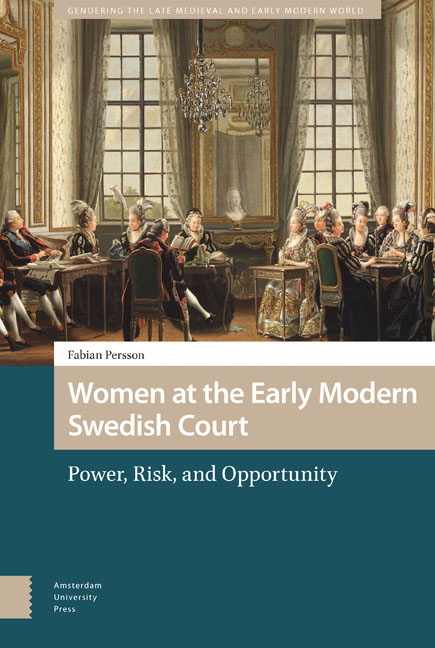Introduction: Women Living with Power
Published online by Cambridge University Press: 15 April 2021
Summary
Abstract
Over the last decades women at court have been rediscovered, but focus has primarily been on royal women and their artistic patronage. The wider machinery of royal power of both royal women and women at court has been less explored. A challenge here is that women were often made invisible in early modern primary sources and listed without names.
Keywords: Female agency, gender, patronage, invisibility, sources
One day in March 1719, Ulrika Eleonora, born a princess of Sweden and now Queen Regnant Elect after the death of her brother King Charles XII approached the gate to the churchyard of Uppsala Cathedral. She walked in stately fashion under a canopy carried by eight generals, her train borne by Gentlemen of the Chamber from her court. Inside the cathedral the Archbishop and the other bishops took their positions as directed by the Master of Ceremonies. The Court Marshal then marched in with members of the court and the Diet's Estate of the Nobles. As the Queen processed into the cathedral, the musicians accompanying her – two kettledrummers and twelve trumpeters – stopped at the cathedral gate, and her entrance was heralded by a prayer led by one of the bishops, while other bishops and Royal Councillors took their places around the altar. The Archbishop stood ready with the balm in the ampulla, or oil horn. Once the Queen had taken her seat on the throne in front of the Banner of the Realm, one of the Councillors took her coronation mantle, a purple velvet affair decorated with golden crowns and tongues of fire and lined with ermine, and placed it on the altar. Another prayer followed, after which the regalia were placed next to the coronation mantle by the Royal Councillors, who then withdrew. There was a full divine service with music. The Queen then stood up, her robe was removed by the Mistress of the Court, Countess Horn, assisted by two Ladies of Honour (kammarfröknar), Countess Torstensson and Baroness von Düben. The Archbishop then lifted the coronation mantle from the altar and placed it on the Queen's shoulders while the three women helped fasten it.
- Type
- Chapter
- Information
- Women at the Early Modern Swedish CourtPower, Risk, and Opportunity, pp. 31 - 44Publisher: Amsterdam University PressPrint publication year: 2021



